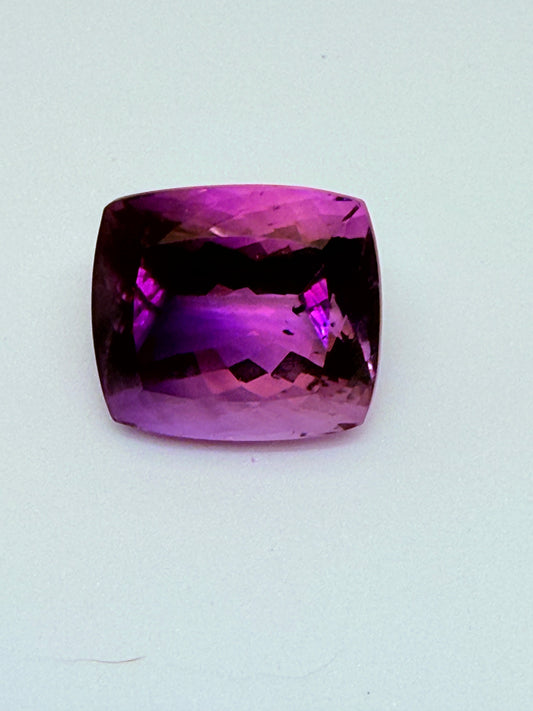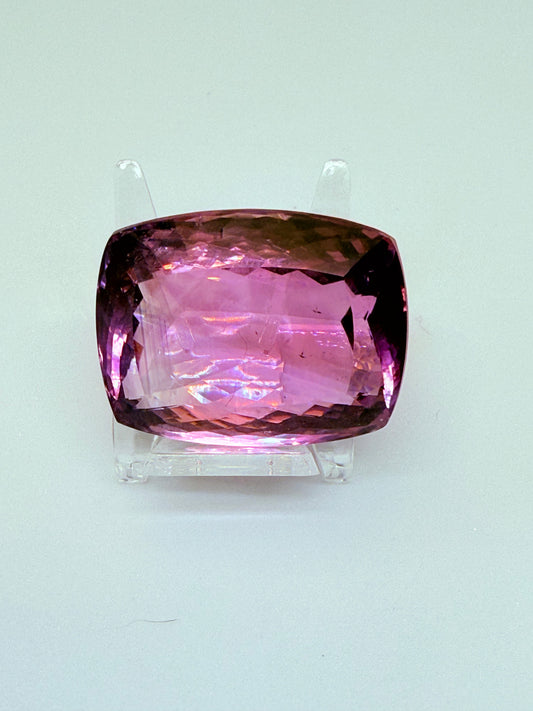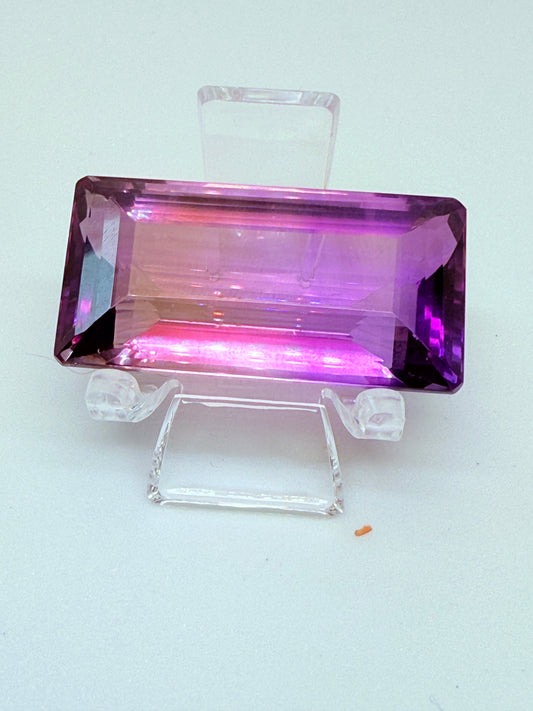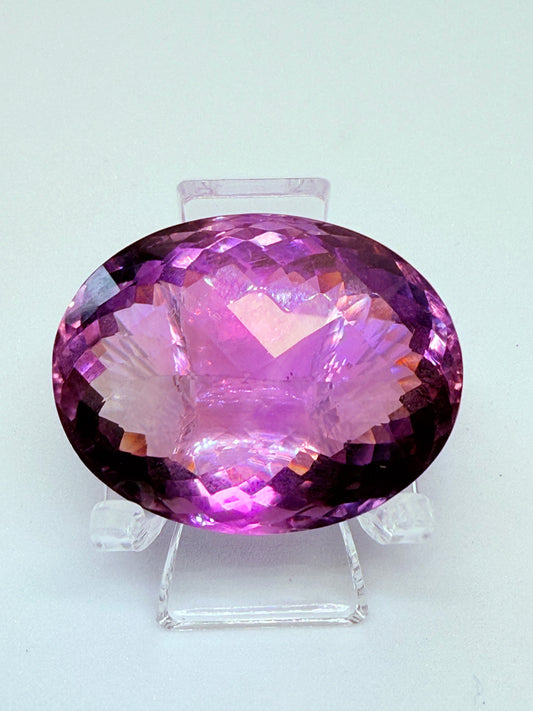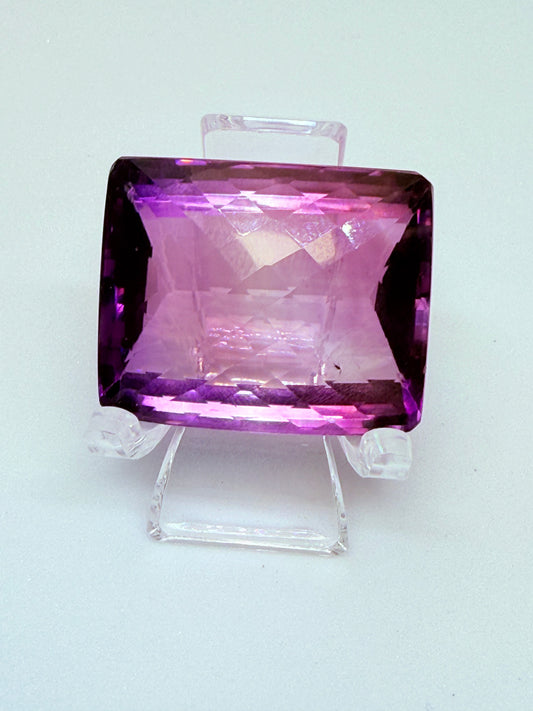Collection: Amethyst
Amethyst is a variety of quartz characterized by its purple color, which can range from a pale hue to an intense dark purple with blue or red highlights. This color is due to the presence of iron and exposure to natural radiation during its formation.
Physical and chemical properties
- Chemical formula: SiO₂ (silicon dioxide)
- Hardness: 7 on the Mohs scale (relatively scratch resistant)
- Density: 2.65 g/cm³
- Luster: Vitreous
- Transparency: From translucent to transparent
- Cleavage: Absent, with conchoidal fracture
Origin and formation
Amethyst forms in geodic cavities within volcanic and metamorphic rocks, where silicon slowly crystallizes in the presence of iron impurities. The most important deposits are found in Brazil, Uruguay, Madagascar, Russia, India, and Zambia .
Varieties and treatments
- Chevron Amethyst: Features white bands of milky quartz.
- Lavender Amethyst: Lighter in color, almost pastel.
- Ametrine: A natural combination of amethyst and citrine, with yellow-purple hues.
- Treatments: Amethyst can be heated to achieve a more intense color or transformed into citrine.
Meaning and metaphysical properties
Since ancient times, amethyst has been considered a stone of spirituality, protection, and mental clarity. The ancient Greeks believed it protected against drunkenness, while in the Middle Ages it was associated with wisdom and royalty.
-
71.8ct Rectangular Amethyst
Regular price €130,67 EURRegular priceUnit price / per -
Rectangular Amethyst 118.3Ct
Regular price €215,30 EURRegular priceUnit price / per -
85.05ct Emerald Cut Rectangular Amethyst
Regular price €154,79 EURRegular priceUnit price / per -
Large Oval Amethyst 97.75Ct
Regular price €177,00 EURRegular priceUnit price / per -
Rectangular Amethyst 107.55Ct
Regular price €195,74 EURRegular priceUnit price / per
